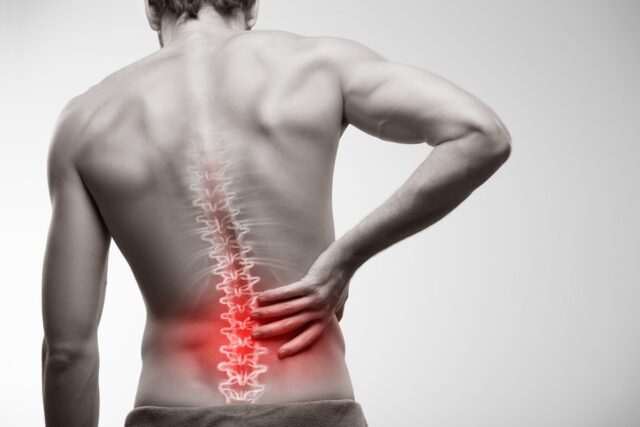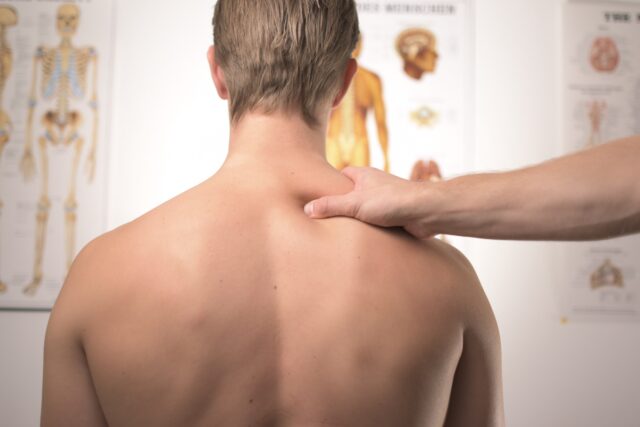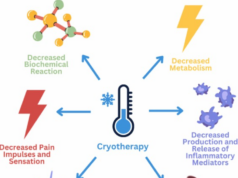Osteopathy is a part of alternative medicine that treats medical conditions focusing on the wellbeing of the whole body. To treat injuries and chronic pain osteopathy pays special attention to the muscles, ligaments, bones, and the connecting tissue. Patients usually visit osteopaths to treat lower back pain that’s affecting millions of people every year. Medical insurance companies spend over $100 million to help patients remedy the chronic back pain causing a massive financial burden for the insurers and the insured alike. Back pain is a lifelong condition that can only be managed, not completely cured. So far, osteopathy has been proven to successfully eliminate the suffering of everyday pain in patients. Let’s see how osteopathy is different from other treatments.
Can osteopathy help with back pain?

Lower back pain affects every aspect of a person’s life. It is a debilitating and sometimes paralyzing condition that diminishes the quality of life with constant pain and suffering. When pain killers stop working, it’s time to look for other solutions. Osteopathy is a manual treatment of reversing the muscles and soft tissue damage and symmetry, thus eliminating the pain. In time, lower back pain can spread down to your hips and legs – triggering a condition known as sciatica. Many people turn to private clinics for the treatment of chronic pain conditions, including migraines and neck pain. Learn more about the osteopathic methods and common conditions it can assist with.
Osteopathy Vs. Physiotherapy and Chiropractic

Osteopathy, physiotherapy, and chiropractic all deal with chronic pain due to injuries, aging, vitamin deficiency, and all sorts of other medical conditions. Despite many similarities between these methods, some slight differences still exist.
Osteopaths look at your body as a whole; a system where every bone, joint, and tissue has to be in perfect balance in order to eliminate the pain in one or more areas. The wellbeing of the complete cardiovascular system and skeleton are taken into consideration when dealing with back pain. It’s a manual therapy consisting of massages and movements to restore the harmony of your body.
Physiotherapy is implemented after illness or mechanical injuries. Physiotherapists treat nerves, muscles, and tissues that have been affected by exercise and manual therapies. This means that patient takes an active role in his or her treatment with physical movements in order to eliminate the pain. The procedure takes months, sometimes even years, and it’s a lifelong commitment. Stopping physical activity can set you back to the beginning.
Chiropractors are focused mainly on neck and back pain. They too look at the whole body before starting the treatment, however, they adjust and manipulate the spine and neck muscles to achieve results.
Physiotherapy is often covered by many medical insurance plans. Other methods usually have to be scheduled in private clinics. It’s totally up to you and your needs which method you’re going to choose. Some people are not comfortable going to the chiropractor and choose milder treatments like osteopathy that will get them the same results. The general advice doctors give is to consult with all three medical professionals before making a decision.
What to expect at the first appointment?

Your first appointment might take up to an hour, so plan ahead, this is not something you can finish up during your lunch break. The osteopath will look at your whole body asking you to make some slight movements and stretches, just so he can determine the flexibility and identify the problem. An osteopath will touch your joints to feel if there is any bone or tissue damage.
After the examination, the osteopath will inform you about the damage and the further course of the treatment. You will get the information about the length of the process and the cost. Before starting any therapy, you will be asked to sign a consent, where you understand and agree with the whole process.
Osteopathy methods

To relieve back pain and muscle tension, your osteopath will use some manual techniques to improve the movements in your joints and ligaments. Here is what you can expect once you decide on this type of back pain relief:
- Massage means directly applying just the right amount of pressure at the painful areas can significantly reduce the pain and tension in your muscles. At some moments, the osteopath will ask you to push back against his or her pressure in order to improve the range of motion of the particular muscle.
- Manipulation is when the medical professional triggers quick and sudden movement of your spine. This is uncomfortable for some patients especially because you can hear your bones moving – getting in the right place. The osteopath will also put your body in the position that causes low or mild pain and keep you like that for a few minutes. During that time, he can observe the reactions of your muscles, joints, and bones, and act accordingly to your body.
- Your joints also need special attention. Functional therapy will move your joints back into the place, and then letting them go back. This will increase their flexibility and help your body return ligaments into a painless position.
- Some osteopaths treat lymph fluids by helping it move through your body. The theory is that the lymph fluid blockages can cause a myriad of problems, including chronic pain of neck and back.
Expectations and side-effects

After the treatment, you can expect some sore muscles and a bit of pain in the treated areas. The osteopath will give you some guidelines on how to maintain the painless back and neck with mild physical activities. Osteopathy can help patients in the long term, giving them time to recover and go back to their daily life. Keeping your body healthy and moving will prolong the effects of the osteopathy. Again, this is a condition that will stay with you, but you can still manage to live life to the fullest if you take good care of your whole body: a healthy diet to keep the weight down, and regular exercise.
Some side effects have been reported, like stiffness, soreness, and mild pain, but they usually go away in a few days. Serious side effects are rare and may include nerve damage and bone fractures. However, the benefits far outweigh the risks, which is why osteopathy is highly recommended in the medical community.







